- News
- Reviews
- Bikes
- Components
- Bar tape & grips
- Bottom brackets
- Brake & gear cables
- Brake & STI levers
- Brake pads & spares
- Brakes
- Cassettes & freewheels
- Chains
- Chainsets & chainrings
- Derailleurs - front
- Derailleurs - rear
- Forks
- Gear levers & shifters
- Groupsets
- Handlebars & extensions
- Headsets
- Hubs
- Inner tubes
- Pedals
- Quick releases & skewers
- Saddles
- Seatposts
- Stems
- Wheels
- Tyres
- Tubeless valves
- Accessories
- Accessories - misc
- Computer mounts
- Bags
- Bar ends
- Bike bags & cases
- Bottle cages
- Bottles
- Cameras
- Car racks
- Child seats
- Computers
- Glasses
- GPS units
- Helmets
- Lights - front
- Lights - rear
- Lights - sets
- Locks
- Mirrors
- Mudguards
- Racks
- Pumps & CO2 inflators
- Puncture kits
- Reflectives
- Smart watches
- Stands and racks
- Trailers
- Clothing
- Health, fitness and nutrition
- Tools and workshop
- Miscellaneous
- Buyers Guides
- Features
- Forum
- Recommends
- Podcast
feature
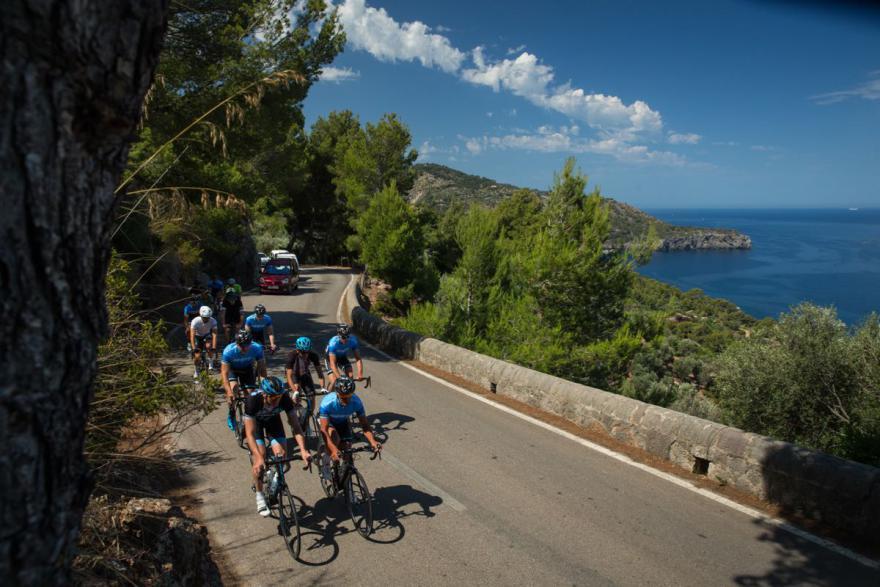 group riding1.jpg
group riding1.jpgShould you try fasted training? Here's what you need to know
Fasted training – exercising without taking on food beforehand, essentially – is a concept that has been around for an age but we’re now hearing about it much more frequently than ever before. You might well have tried it for yourself. But does it really offer any benefits and, if so, how do you do it right?
Fuel sources
When we exercise, we get most of our energy from two sources: fat and carbohydrate. Even the leanest athlete has a massive amount of energy stored as body fat compared to the amount of carbohydrate stored as glycogen in their muscles and liver.
Most of your fuel comes from fat when you’re resting or exercising at a low intensity, but as your exercise intensity increases a higher percentage of your fuel comes from carbohydrate. Although there’s less carbohydrate available, it’s easier for your body to access and use, so it’s the favoured source when you need a lot of energy fast.
We can increase the contribution of fat as fuel for exercise through training and nutrition. This is an advantage because, as mentioned, you have huge stores of fat and limited stores of carbohydrate, and if you run out of carbohydrate you’ll ‘bonk’ or ‘hit the wall’. It feels awful and that’s the end of your ride.
What is fasted training?
Fasted training – or training low – means limiting the supply of carbohydrate to the working muscles by exercising when carbohydrate availability is low. This is most often achieved by not consuming carbohydrate in the period leading up to training or during the session. You might train before breakfast, for example, or have lunch at noon, say, and not eat anything else before training at 7pm.
“Fasted training is the idea that you can train in a slightly depleted carbohydrate state so that you can better promote fat usage or force the body to use fat so that when you switch back to a carbohydrate rich diet your performance will increase,” says cycling coach Ric Stern of RST Professional Training Systems. “Additionally, it has also been suggested that it may help with weight loss.”
Matt Hart of Torq Fitness says, “One of the most important adaptions to endurance training is an increase in the number of our mitochondria and this occurs through a process called ‘mitochondrial biogenesis’.
“Mitochondria are basically the engine of the muscle cells, responsible for burning both fat and carbohydrate. The more mitochondria that we have, the better our exercise capacity. In other words, with more mitochondria we can perform more work over a shorter period.
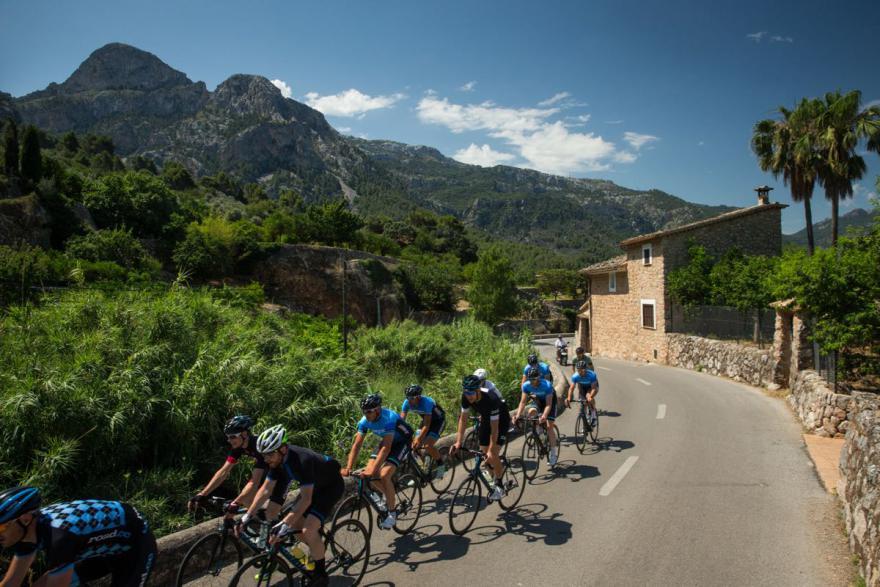
“The stress associated with exercise leads to our muscles sending out signals (or ‘gene expression’ as its referred to in science). These signals dictate how the muscles respond and adapt to that session. In the case of training with low carbohydrate availability, the increased stress response from not having carbohydrate available as a fuel leads to an increase in signals associated with mitochondrial biogenesis [so you achieve] a greater amount of mitochondrial biogenesis than training with a high carbohydrate availability. This effectively means that you get more bang for your buck when it comes to training with low carbohydrate availability.
“Several studies have now shown that completing selected sessions with low carbohydrate availability can lead to positive training adaptations associated with fat metabolism (mitochondria biogenesis is a key one) to a greater degree than training with high carbohydrate availability for all sessions.”
You wouldn’t want to do all of your rides fasted because you’ll miss out on other benefits of training, but evidence suggests that some fasted training could make sense in certain cases.
How should you do it right?
As mentioned up top, high intensity training sessions are fuelled mainly by carbohydrate. This means that you’d probably struggle to complete a full-gas, on-the-rivet session while fasted. Even if you get through it, you won’t necessarily have trained as effectively as if you’d given your body a good supply of carbohydrate, so you’re better off sticking to lower intensities.
Torq Fitness’s Matt Hart doesn’t see a value in fasted training for those with already demanding schedules.
“For athletes completing 5-6 days of training per week, undertaking multiple training sessions within a day, or having a generally high training volume, training with low carbohydrate availability is inevitable, as it can be a challenge to consume sufficient food to meet the carbohydrate requirements of exercise,” says Matt. “In this scenario, there is little need to programme low training sessions into your week as it is likely to occur anyway.”
He does think it’s worth considering by those who aren’t able to get this amount of time on the bike.
“For the average athlete with limited time to train (say 3-4 sessions a week totalling 4-5 hours of training)… the inclusion of a 1-2 hour fasted training session could bring about aerobic benefits similar to a much longer well-fuelled session, so is the ideal approach for time-starved endurance athletes. However, limit it to around 1-2 sessions per week at most.”
Nigel Mitchell, Head of Nutrition at EF Education First-Drapac p/b Cannondale, also says that you should limit the amount of fasted training you do.
“You should not be fasted on every training ride,” says Nigel, who is also part of the OTE Sports product development team. “Extended fasted rides or lots of fasted rides may down regulate your glycolytic enzymes and leave you with a diesel engine. A low carbohydrate state can also suppress the immune system and leave people more prone to infections.
"One or two rides per week at the appropriate time of year is what is recommended. You need to have the right balance of training sessions to get the maximum improvements in your overall cycling performance.”
Ric Stern agrees that it's best to focus on low intensity for fasted training.
“It’s possible to do shortish steady rides of up to two hours while just taking on water or a zero calorie drink, or try a shorter, steadier ride with some intervals at the end,” says Ric. “Always carry a couple of gels in your pocket as insurance in case you blow up on your ride.”
“Fasted training seems to push some people up to new levels, even if during the ride their power is down on their normal fed state, while it doesn’t make any difference for others, except that they complain they’re hungry!
“Evidence is limited on whether fasted training helps with weight loss. However, from a personal perspective I’ve tried and suggested to people I work with that they do one ride a week in a fasted state. If nothing else, it mentally prepares you for the chance that you turn up at event without having eaten beforehand or if you have to go training with no food because the wretched kids have eaten it all!
“If you use a diet like the 5:2 system (where you fast or eat minimal energy on the ‘2’ days) then I’d suggest that your riding on the fasted/low energy days should be limited to about 60 to 90mins of steady riding with no intervals or you could compromise your training on the following days.”
Some riders extend their fasted rides, but you'll need to take some fuel on board sooner or later.
"People can build up the length of their fasted rides, maybe to 3-4 hours like some professional riders will do at specific times of the year," says Nigel Mitchell.
"I recommend that after 60-90 minutes of riding fasted people start to eat – something like a banana every 45mins – or use a carbohydrate energy drink or gel to supplement about 30g of carbohydrate per hour after the initial 90 minutes. It is important to remain hydrated during fasted training."
Preparing for your fasted ride
“Before a fasted ride, I’d suggest a couple of espressos (with no milk or sugar), and take some water,” says Ric Stern.
Matt Hart agrees that coffee will help and also says, “Consuming around 20-25g of a lean protein source, such as 2-3 scrambled eggs, before a session can help to offset the breakdown of protein and keep hunger at bay.”
Okay, that's not strictly 'fasted' but there’s hardly any carbohydrate in eggs so they won’t compromise the point of the session.
"The first part of the ride is what really drives fat oxidation," says Nigel Mitchell. "Pre-workout products are also very useful to use when doing fasted training. They usually contain active ingredients that are beneficial to low carbohydrate endurance training or intense anaerobic exercise, such as beta alanine which has been shown to delay muscle fatigue, whey protein to reduce muscle damage, l-glutamine to help with gut health and immune function, and caffeine which is a fatty acid mobiliser."
Recovery
You’ll need to refuel properly after a fasted training session in order to make the potential fitness gains.
"To maximise the effect of fasted training you should avoid having high carbohydrate foods immediately after the ride as they can down regulate some of the adaptations, and benefits of this type of training," says Nigel Mitchell. "Using a recovery drink that delivers 20-30g of carbohydrate and 25-30g of protein will be of more benefit immediately afterwards. This should be followed with something more substantial after about 90 minutes – real food that provides protein and carbohydrates."
Matt Hart says, “Completing a fasted session can increase the amount of time it takes to recover in comparison to a well-fuelled session, so you will need to consume a carbohydrate and protein-rich diet for 24-48 hours if you’re wanting to follow up with a useful high intensity exercise bout. Selecting a session prior to a rest day would represent the ideal option. For this reason, it may also be best to avoid this type of training around competition.”
Thanks to Ric Stern of RST Professional Training Systems, Nigel Mitchell of EF Education First-Drapac p/b Cannondale and OTE and Matt Hart of Torq Fitness. For more info check out Matt’s feature: Fasted Training or Training Low.
Mat has been in cycling media since 1996, on titles including BikeRadar, Total Bike, Total Mountain Bike, What Mountain Bike and Mountain Biking UK, and he has been editor of 220 Triathlon and Cycling Plus. Mat has been road.cc technical editor for over a decade, testing bikes, fettling the latest kit, and trying out the most up-to-the-minute clothing. He has won his category in Ironman UK 70.3 and finished on the podium in both marathons he has run. Mat is a Cambridge graduate who did a post-grad in magazine journalism, and he is a winner of the Cycling Media Award for Specialist Online Writer. Now over 50, he's riding road and gravel bikes most days for fun and fitness rather than training for competitions.
Latest Comments
- David9694 19 min 58 sec ago
Stouport residents bemoan huge traffic queues through town...
- imajez 6 hours 25 min ago
- looks like someone has fallen for the steel is real markerting BS. I only care how a bike rides, not what it is made of. I had a lovely steel...
- lonpfrb 7 hours 45 min ago
That argument is ignorance of the widespread height and width restrictions to be found on the many minor roads that were originally created for...
- rookybiker 11 hours 13 min ago
The trailer seems to connect to both ends of the rear axle. Can it do tight corners without dragging the tyre sideways?
- froze 11 hours 17 min ago
Motorists have always been unkind to cyclists, but distracted driving is adding to the problem....
- Destroyer666 12 hours 10 min ago
Have you owned Bont shoes? In my experience even the widest Lake shoes have had a bizarre form of narrowing way too much in the toe area. But the...
- froze 12 hours 38 min ago
Not sure if this is possible, but this news letter goes out all over the world, and some places like Decathlon does not send stuff to America, in...
- Hirsute 13 hours 22 min ago
I'm confused as to why you'd need bib shorts indoors.
- Oldfatgit 13 hours 51 min ago
I'm sure you were being sarcastic... however ... Lewis Hamilton lives in Monaco. Yet another car driver that doesn't pay any tax
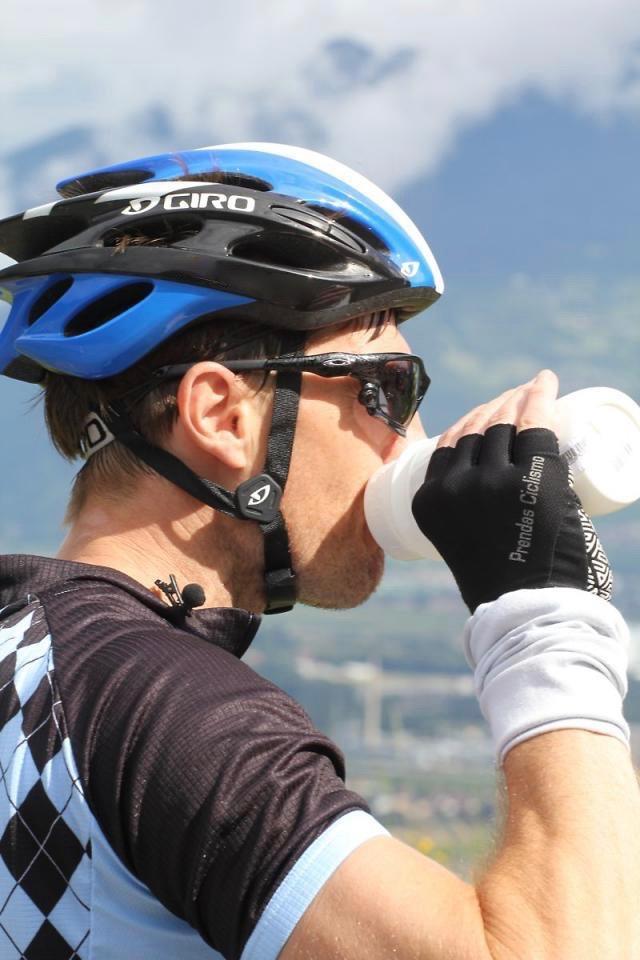
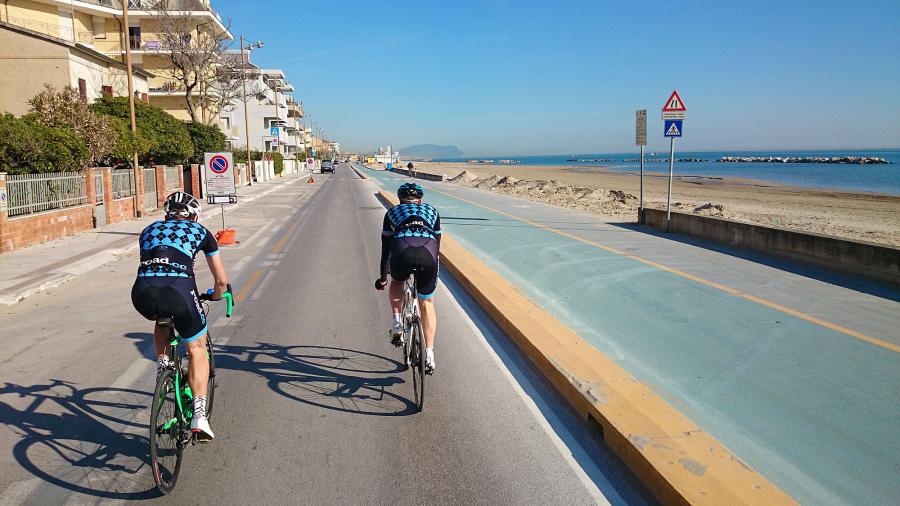
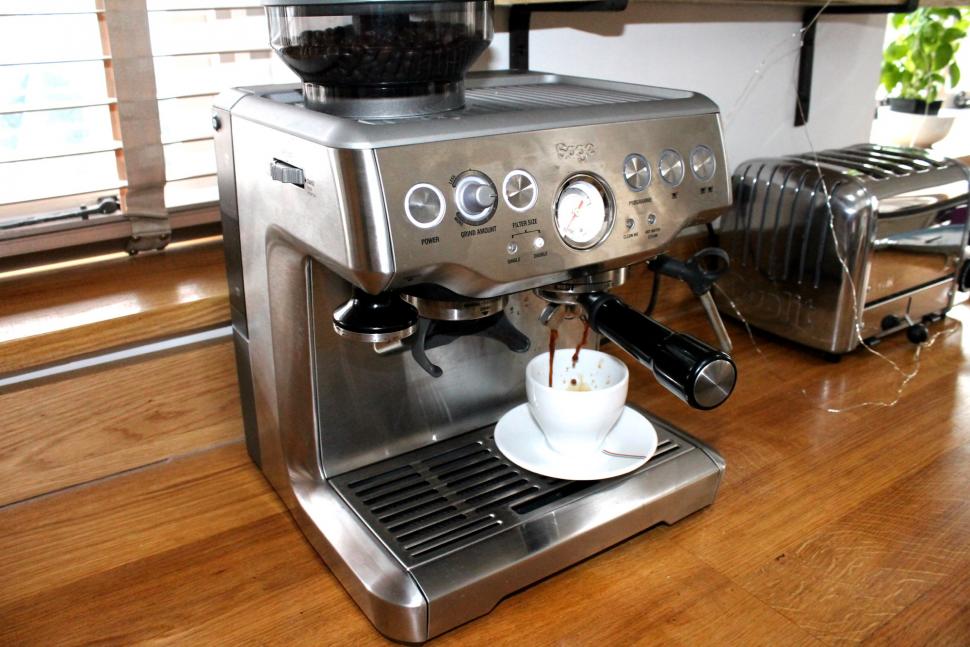
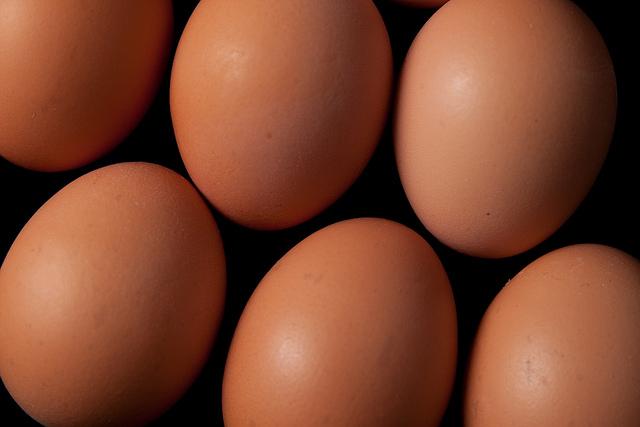
Add new comment
23 comments
I'm don't race, so not looking to maximise performance or anything, but my experience has been thus.
Having toyed with the idea of fasted rides for about a year or more, and managing rides of about 90 minutes at a steady pace, in summer 2019 I decided to give it a go more seriously. My wife wanted to try a keto diet and intermittent fasting, so being curious about that as well, and in the interest of being supportive, I went along. I initially founf it quite easy to build up to 2 hour rides, having breakfast when I came home (I practically always ride first thing in the morning). I did bonk quite badly early on when I tried to push it a bit too far too fast (80km with 900m vertical), but I've repeated that ride and longer/harder several times since with no issues. Longest ride so far has been 5 hours - albeit at a steady pace. I rarely arrive in the door ravenous post-ride, but will usually have some protein rich food like eggs shortly thereafter.
As I said, my style of riding and goal is more endurance rather than hammering it, but I still find I can put pedal to metal if I want to with no adverse effects. I haven't stuck stricly to the keto diet (I like my sourdough too much), but would still consider myself to be relatively low carb. While I have shed about 10kg in the period, I'd more put that down to the intermittent fasting (generally a good brunch/lunch and dinner) and in particular restricting intake of refined sugars, rather than exploits on the bike.
So maybe not for everybody, but personally I'm quite content that it works well for me to the extent that on one occasion when I headed out for a spin about an hour after lunch, I felt distinctly bloated at the outset
Wait until the Rapha water bottle guy gets a hold of this article!
My thoughts exactly
The following is anecdotal as it's based on my personal experience rather than any science, but I find I can do VO2 max intervals, shorter anaerobic intervals and even HIIT sessions when fasted. I can do them at the same intensity and power as when not fasted. All intervals being based on my fed FTP. However what I find to be seriously compromised is threshold work. I find when attempting any kind of classic 2x20 that I can only just struggle through the first block and then the second one is impossible both physically and mentally as I just know I can't do it when going into it. These sessions being hard but readily achievable when fed. I think when working at threshold you're chewing through glycogen and when it's depleted you just can't convert fats fast enough.
Pay close attention to how much salt you're losing. I lost 15lbs doing this last summer but plateaued and got very sick from a lack of salt. For me, it did more long-term harm than good. I should also say summers, where I live, are often 30C+ and very humid.
It's obvious that you will lose weight/ body fat if done regularly enough and for long period, weeks /months .
The body has to take fuel from somewhere, if there are no carbs/calories consumed it will take it from body store, fat. The balance is to replenish after the ride essential nutrients without exceeding calories burnt.
I would challenge your first point. I do not feel it is obvious, because, as you say there is still the need to monitor calories consumed post exercise.
What is good however is that instead of eating and then having to consume, you are starting with the deficit, which is easier to manage, arguably.
I'd also argue that training fasted has the potential to burn fewer calories overall due to the tendency to train at a lower intensity when fasted.
FWIW in his ‘fueling the cycling revolution’ book Nigel Mitchell suggests that fasted training has its place but not to lose weight. Rather to adapt to burning more fat, so you switch to glycogen burning at a higher intensity and preserve the carbs for all out efforts.
I find it easier to maintain negative calories with fasted rides at a low intensity though, so I can see where the weight loss idea comes from. I definitely feel a better rider for incorporating them but I’ve made other changes too so who knows.
I won't say I am skeptical of the science, as I am not, but I am very sceptical of the successful every day application by the 'common man'.
My take on this is that fasted training is good for stimulating fueling adpatations... which for me means being able to burn fat at a higher intensity.
At low intensities we are already perfectly adept at burning fat as a fuel, so if thats what you are doing anyway, fasted training makes no sense.
Many of the comments I've read seem to focus more on not making any fueling mistakes... so to avoid fueling poorly, don't fuel at all.
This is well grounded, as one thing you can be assured of, is in the morning, pre food, your blood sugar will be superbly stable which is a great base to fuel for a ride.
I have done it for few years. I believe it works. Have been bonk-less ever since.
Not sure about weight loss claims... If you condition your body to take more energy from fat, it will store more energy as fat
Only if you eat food that will help you develop fat will you develop fat. This is why sugar is the current enemy and kale isn't.
Burning off fat will not necessarily equal losing weight either.
ate 1.5 hours before a zwift race last night. threw up in the garage after 10 minues. Peanut butter sarnie was not a wise choice. I need 3 hours to digest before a hard ride, 2 for a potter.
finished the 40km ride then wiped the vom off my top tube. Feeling classy.
But did you win?
No time to eat banana before leaving house on Sunday morning @ crack of = fasted ride.
Eat banana first = non-fasted ride
Expresso whichever!
Always leave an hour before first on bike food though, never 'bonked' on 3-4 hour winter training rides following either strategy.
Years of doing the 5:2 diet (and then falling off the wagon for a bit then starting again) have got me used to training in a fasted state. Generally I'll still commute 35ish miles on a fasted day or be happy doing an hours turbo work (going more than an hour always seems a struggle although I still think that's physcoloical rather than physiological). I'd never eat breakfast before riding the 17 miles into work
Strangely I find my performance for short bursts can be much better fasted and my heart rates runs generally a zone lower for the same power output.
My standard technique is/was to cock up my fuelling near the end of long rides and spend the last 90 minutes wheelsucking the man with the hammer. It ain't pretty but it has led to strong adaptations that come in helpful on the longest races.
I been fasted training rides for 2 years plus, its works well for me.
Its amazing that I don't needs to eat at all pre-ride and intra-ride. Only post-ride I will eat a lot. My performance not suffer at all. I do test fed vs fasted rides, I find that fed or not, its not make much different result for me.
Why fasted? I just bored of "what to eat? what to eat? oh my..." "oh crap crap crap crap I can't do anything if I don't eat!" "I am damn hungry! I can't do it!" "hungry hungry hungry HUNGRYYYYYY!" "OH NOSE I SKIPPED BREAKFAST! I AM DOOMED! HELP!" "I must eat during ride or else, I will die!".
I am glad I put those craps behind. Its works for me.
BONUS: I saved a lot money from eating as well! so plus plus!
However, if you do racing in "pro tour level" I think you better train with fed, better safe than sorry. Otherwise, fasted training give amazing result, at least for me.
I’ll eat enough, pre ride, to replenish my glycogen stores, and no more. All that a ‘carb loading’ approach does ( absolutely stuffing yourself with pasta for example) is leave you feeling bloated, once your stores are full, anything else you eat will be a wasted effort. Fasted riding is okay, but only if you have the glycogen stores full, before you start the ride. If you deliberately try to do a significant ride, with little or no stored Glycogen, and force your body straight into fat burning, you need psychiatric help, in my opinion.
I can eat a meal at 7pm, and ride up to 50miles, 60 at a push the next morning on only a coffee and feel absolutely fine. Over the years I ride better this way, much more than eating 2 hours before where I still get indigestion. I carry a gel or bar in the event something is out of balance and I need a get me home but rarely used.
If riding longer, I go out fasted as normal, but start eating around 20m in.
On getting home I eat a carb/protein based meal, I'm not starving, eating the cupboards bare, just hungry like a normal morning.
Used with zone 1/2 intensity for an hour can help shift body fat. You must refuel immediately after(like, within 10mins) with carbs and protein, but not to excess.
No.
Having bonked a couple of times in the past from not eating enough during the day I would be worried about the same happening again. These were however, on fairly high intensity group rides so I may give it a go on a lower intensity solo ride.
Invaluable for me.
I've used fasted, low-intensity morning hour-ish commutes for around 10 years. They seem to help me shift excess timber when I need to (cough-post-Christmas-cough) but, more importantly, with the adaptation to fat burning. For someone who wasn't your natural endurance athlete (ex-sprinter (athletics) and rugby player, used to stop-starts and bursts in the seconds, not even minutes) who fancied triathlons, that was crucial to being able to 'go long'.
Shoehorning it into the commutes worked for me: I'd've struggled to accommodate it otherwise, and they formed the backbone of my diesel training - crucial ultimately for ironmans, but with massive cross-discipline bonuses. I like my knees, and have never fancied putting the recommended running miles in for an ironman, never mind a marathon, but I can knock off ultramarathons doing running mileages way lower than a typical long-distance runner.